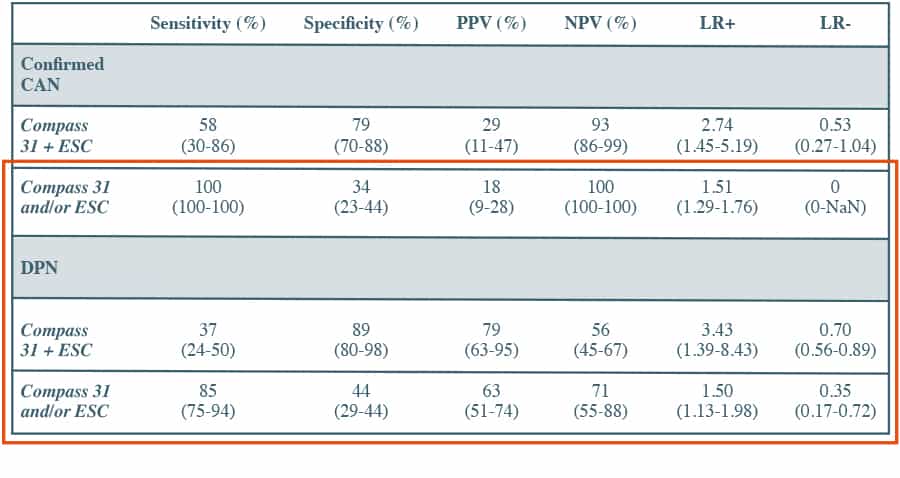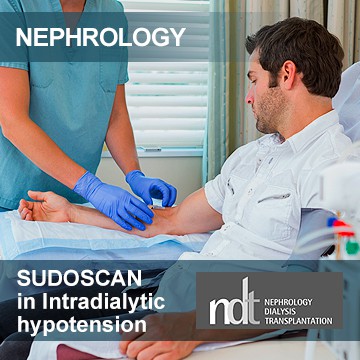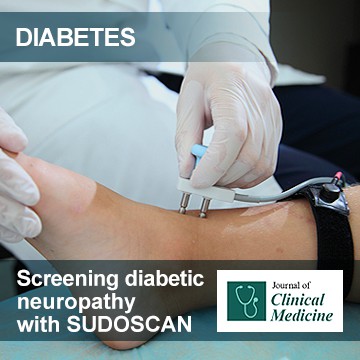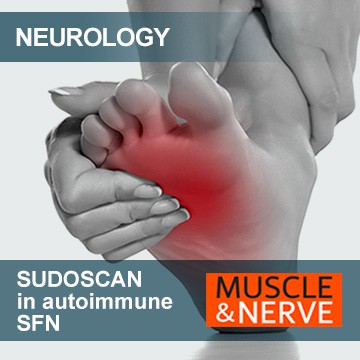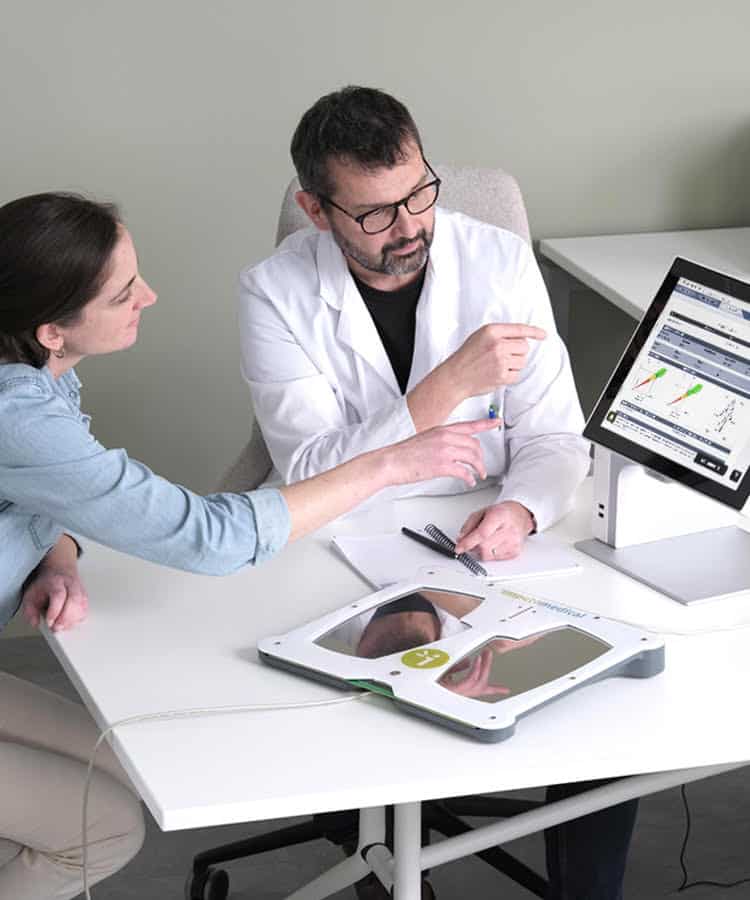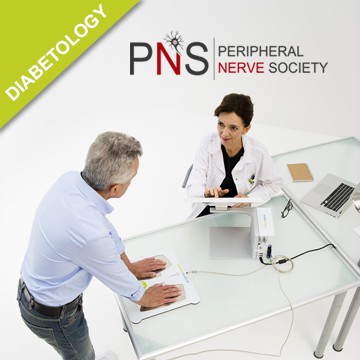
THE UTILITY OF SUDOSCAN TO DIAGNOSE DIABETIC CARDIOVASCULAR AUTONOMIC NEUROPATHY
AND DIABETIC POLYNEUROPATHY
C. D’amato, C. Greco, G. Lombardo, V. Frattina, M. Campo, C.M.A. Cefalo, V. Izzo, D. Lauro, V. Spallone.
Article title: “The diagnostic usefulness of the combined COMPASS 31 questionnaire and electrochemical skin conductance for diabetic cardiovascular autonomic neuropathy and diabetic polyneuropathy”
J Peripher Nerv Syst. 2020 Jan 27.
In a recent study conducted at the university of Rome, Vicenza SPALLONE and her team demonstrated
the utility of SUDOSCAN to diagnose diabetic cardiovascular autonomic neuropathy (CAN) and diabetic polyneuropathy (DPN).
102 diabetic participants were evaluated with the COMPASS 31 questionnaire, a validated questionnaire for autonomic symptoms of CAN, in combination with sudomotor function (sweat gland innervation) testing with SUDOSCAN (results reported as electrochemical skin conductances-ESC). CAN was defined as 2 or more abnormal cardiovascular reflex tests (CARTs); DPN as 2 abnormalities among neuropathic symptoms, signs, vibration perception testing, and thermal thresholds.
In a population with confirmed CAN and DPN, the percentage of abnormal COMPASS 31 + ESC results were 58% and 37%, respectively. These values increase to 100% and 85% when one of the two tests is abnormal (COMPASS 31 and/or ESC), see Figure 1.
The sensitivities and specificities are reported in Table 1. COMPASS 31 and ESC reached a sensitivity of 75% and 83% for confirmed CAN, and a specificity of 65% and 67% for DPN. Both patterns – abnormal COMPASS 31+ESC and abnormal COMPASS 31 and/or ESC – were associated with CAN and DPN (P<0.01). When combining the tests, the sensitivity rose to 100% for CAN and the specificity up to 89% for DPN (reported in Table 2).
These promising results demonstrate the utility of SUDOSCAN combined with a simple questionnaire, COMPASS 31, to identify cardiovascular autonomic neuropathy within a diabetic population and then confirm the diagnosis with specific tools. A normal SUDOSCAN and COMPASS 31 suggest the absence of CAN, while 2 abnormal tests should prompt additional testing with CARTs.
Figure 1
Percentage of pattern COMPASS 31+ESC (abnormality in both measures) and pattern COMPASS 31 and/or ESC (abnormality in at least one measure) in patients with CAN, confirmed CAN and DPN.
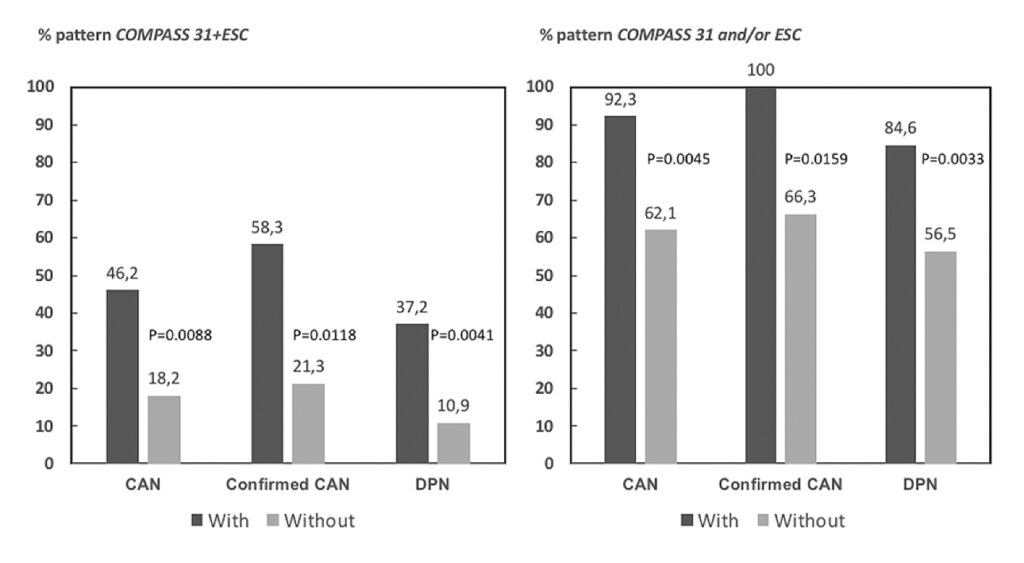
CAN (≥1 abnormal CART) and confirmed CAN (≥2 abnormal CARTs)
Table 1
Diagnostic characteristics for confirmed CAN and DPN of abnormality in COMPASS 31 or ESC (hands and/or feet): sensitivity, specificity, Positive Predictive Value (PPV), Negative Predictor Value (NPV), Likelihood ratio for positive (LR+) and negative (LR-) results. 95% CI in the brackets.
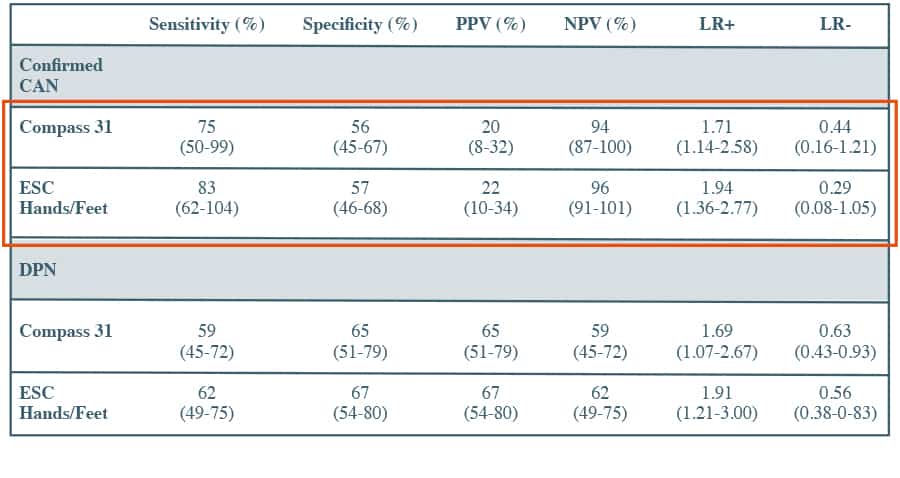
Table 2
Diagnostic characteristics for confirmed CAN and DPN of pattern COMPASS 31+ESC or Compass 31 and/or ESC: sensitivity, specificity, Positive Predictive Value (PPV), Negative Predictor Value (NPV), Likelihood ratio for positive (LR+) and negative (LR-) results. 95% CI in the brackets.
